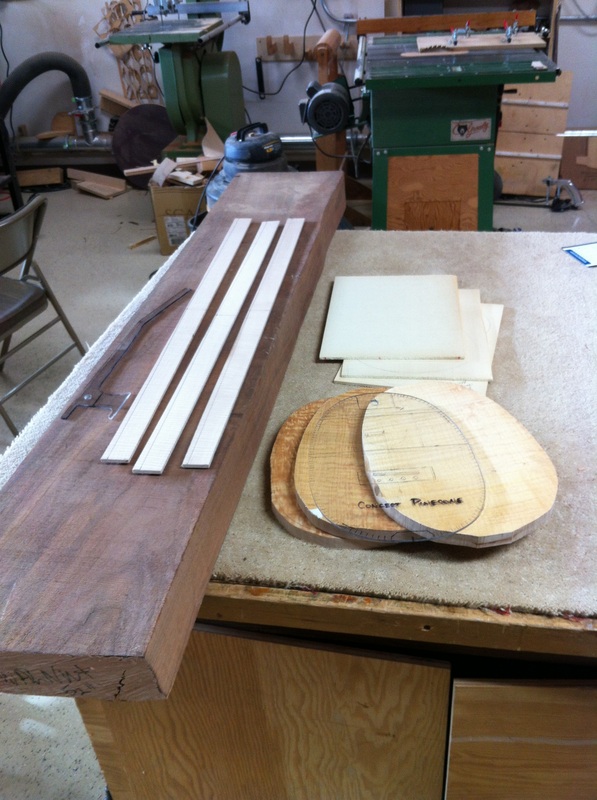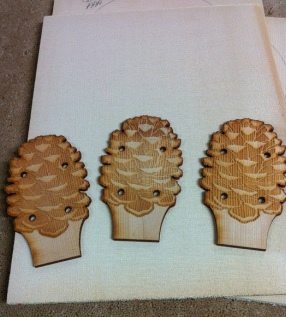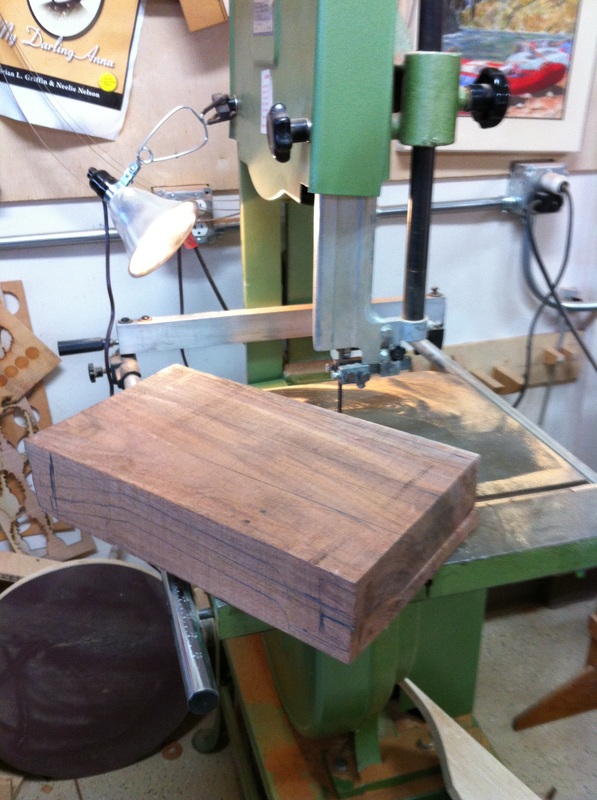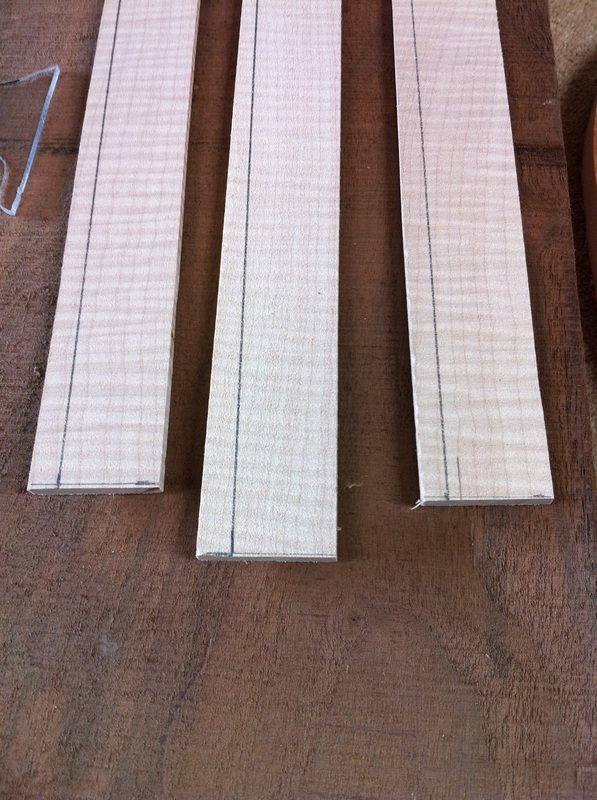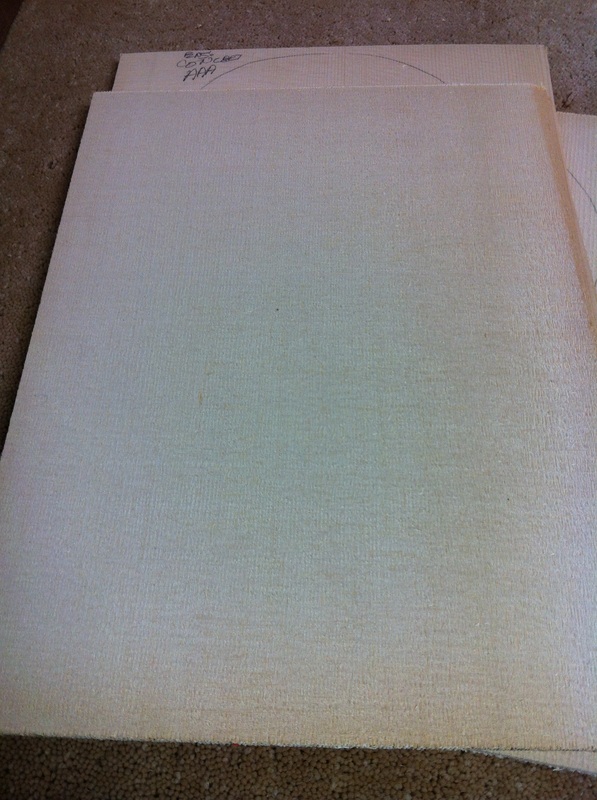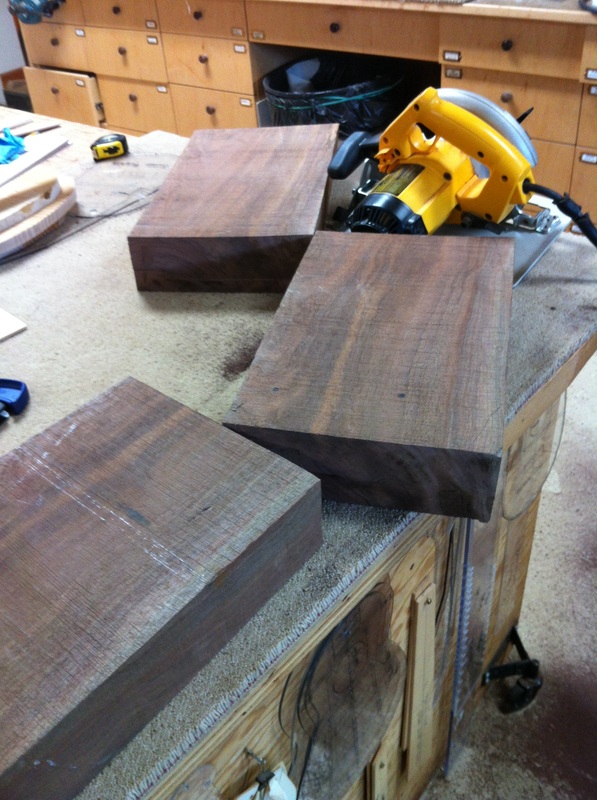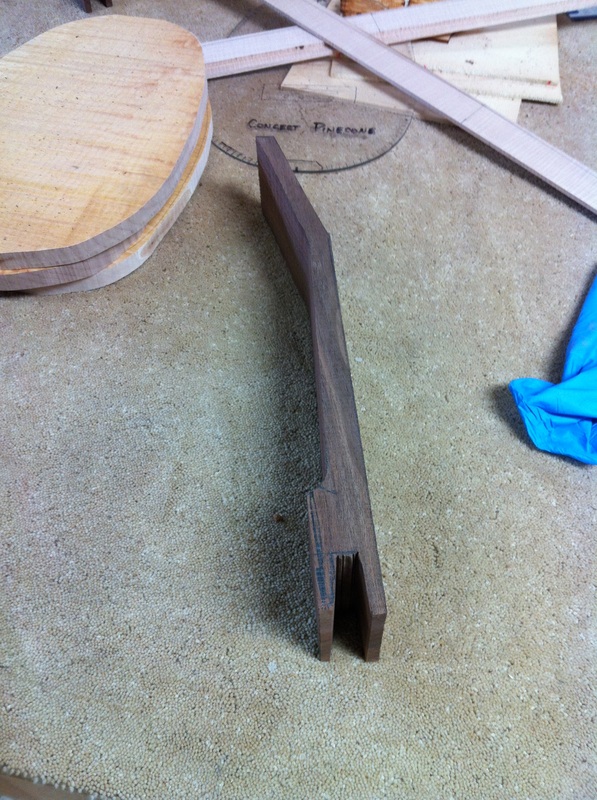It seems that whenever I get to the final finish stage on a Ukulele build my mind goes to the next project. In a couple of days I will be glueing the bridges on the tenors making the bone nuts and saddles, and stringing them up About this time I begin to get the itch to start the next build. That happened to me today-I began to assemble the parts and pieces for a build of three concert Pinecone ukes, the extremely popular and tuneful travel ukes that have turned out to be the favorites for daily playing for many. Here is what I got done today before the Super Bowl began.
AND WHAT A BALL GAME! THE PACIFIC NORTHWEST IS GOING CRAZY AS I WRITE THIS.
AND WHAT A BALL GAME! THE PACIFIC NORTHWEST IS GOING CRAZY AS I WRITE THIS.
| Here are the basics, Three lovely pieces of Englemann Spruce for the sound boards, Three highly figured oval backs that are 3/4 inches thick and will be first curved and then hollowed. then sanded and polished to a high sheen. Three long and narrow strips of maple that will be cut, thinned, and bent into the pinecone shape, and finally a huge piece of walnut from a tree I had cut down 35 years ago and have stored in my workshop. It will be cut up for the necks. Here's a close-up of one of the backs, when this is finished it will be just beautiful. Here are the pinecone peg head plates that brand these instruments. I have them made by laser. The idea for the name "Pinecone" stems from the fact that these ukes are made from Pacific Northwest woods, Maple, Spruce and Walnut. This is an instrument of Pacific Northwest wood. And now to the bandsaw. Because I like to use an un-laminated piece of wood for necks this piece will make just six necks. It would be a lot tougher to make ukuleles without a bandsaw. | Look at the wonderful figure on these sides. Each one is 30.1/2 inches long. They will be cut to 1 inch at either end and 1/14 in the center. They will be thinned down in the thickness planer and bent into the pinecone shape. Another close-up of the lovely Englemann Spruce top. Hope you can see how fine the grain is. I use Englemann for these concerts because I think the tone is warmer than Sitka and seems to lend great sound to these remarkably thin instruments. I cut that huge hunk of walnut with my skill-saw, took a cut on both sides to do it. The walnut tree grew on Dupont Street in Bellingham until the owner wanted to make room for parking cars. The tree was planted about 1890 and cut down in 1980. I bought the tree, had it sawn into planks and saved it for this great use. It is beautiful, strong and stable, perfect for uke necks. And here is the result of all that sawing, The rough form of a concert Pinecone neck. Keep watching and I will try to photograph and relay how you build a pinecone. |
